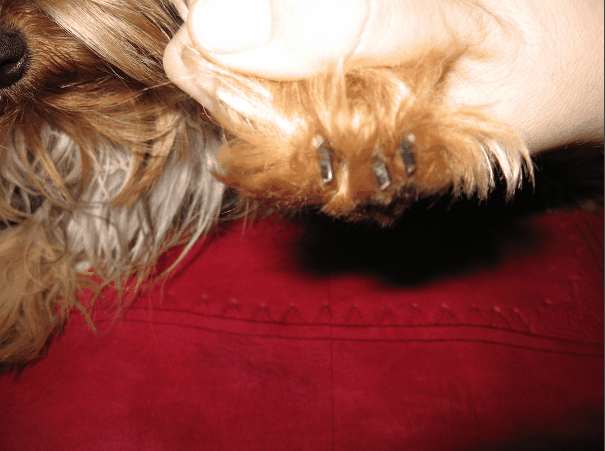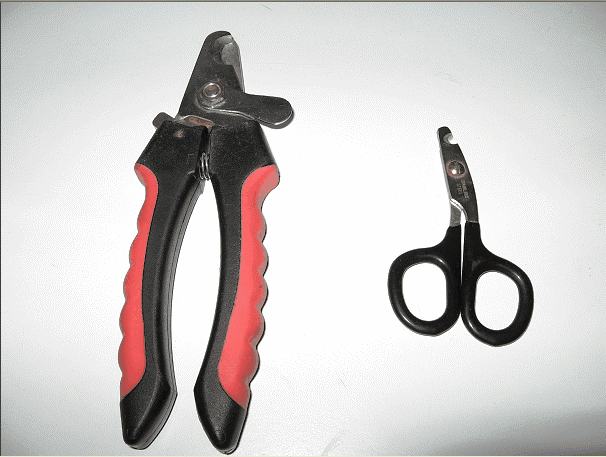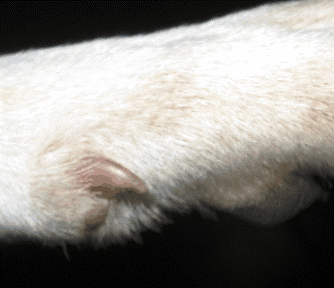Nails
When our dog is too young, we can't trim its nails. The best indicator of when to do this is the moment it scratches us as they support their legs on us. If our dog has white nails, we can see the area where the blood is by noticing the pink colour. The white area is the one we can trim. When they have black nails, it will be harder to tell the difference. In this case, it is better if this is done by the veterinary doctor.


These are 2 pictures of Puppies of the same age. In both cases, their owners wanted to trim their nails. On the first picture (white nails) it was easy to explain to them where to properly cut them. As you can see, it is quite obvious where the blood is, so we couldn't trim them. In the second case, we can't be sure just by looking at its nails. We need to trust a vet's experience to know where to cut.
For a dog not to scratch, the only solution is to "sand" its nails:
1. we can take it out for a walk on a cemented sidewalk. This is the most natural way to sand their nails. We need to do this regularly as they become adults and thus saving them the bad experience of going to the vet for this. Sometimes, this doesn't happen if they live around sand, earth, or any other surface which doesn't sand their nails naturally.
2. When we can't take them out because they haven't been vaccinated, we can use a sanding board for nails carefully. In the case of black nails, I advice you to look at the nails of other puppies with white nails to get a better idea.
As the puppy gets older, it will have harder nails. If you don't have the capability of taking it out for walks to sand its nails naturally, you need to go to the clinic to get the cut. If we attempt to do this ourselves, we need to know a few things:
- we need to use the proper tools for this task. Their nails are quite hard and if we don't make a clean cut, bacteria and fungi can accumulate in the cracks. These might reach sensitive areas and our dog might limp.

These are examples of nail clippers, both for a large dog and a small dog, such as a toy race.
2.If we cut too much, we might get into the irrigated area and cause a bleeding. In this case, we need to use a sterile gauze to apply pressure on the nail. We will need to patch it to avoid any infections. Our dog can't be allowed to touch its mouth in this condition.
3.We can't forget that there is another finger, the first thumb, which is shorter. This finger won't naturally sand itself due to its position and size. Sometimes, it grows so much it causes wounds by scratching the skin of our dog since it grows as a curl.

This finger is also known as "spur". Not every race will have it. We need to see if our dog has it.

